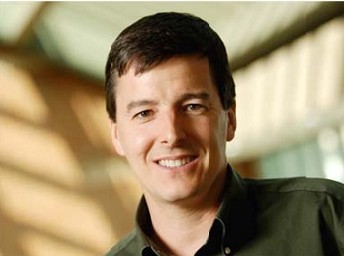Stretchy Electronics That Can Dissolve in Your Body
John Ashley Rogers
University of Illinois at Urbana – Champaign, USA
Abstract: Biology is soft, curvilinear and transient; modern silicon technology is rigid, planar everlasting. Electronic systems that eliminate this profound mismatch in properties will lead to new types of devices, capable of integrating non-invasively with the body, providing function over some useful period of time, and then dissolving into surrounding biofluids. Recent work establishes a complete set of materials, mechanics designs and manufacturing approaches that enable these features in a class of electronics with performance comparable to that of conventional wafer-based technologies. This talk summarizes the key ideas through demonstrations in skin-mounted ‘epidermal’ monitors, advanced surgical tools and bioresorbable electronic bacteriocides.
时间:2013 年 10 月 15 日(周二)上午 10:00-11:30
地点:浙江大学玉泉校区邵科馆一楼阶梯会议室
承办单位:建筑工程学院、航空航天学院、材料科学与工程学系、化学工程与生物工程学系、基础
医学系、生物医学工程与仪器科学学院、光电信息工程学系、信息与电子工程系、求是高等研究院、
软物质科学研究中心
报告人简介

Professor John A. Rogers obtained BA and BS degrees in chemistry and in physics from the University of Texas, Austin, in 1989. From MIT, he received SM degrees in physics and in chemistry in 1992 and the PhD degree in physical chemistry in 1995. From 1995 to 1997, Rogers was a Junior Fellow in the Harvard University Society of Fellows.He joined Bell Laboratories as a Member of Technical Staff in the Condensed Matter Physics Research Department in 1997, and served as Director of this department from the end of 2000 to 2002.He is currently Swanlund Chair Professor at University of Illinois at Urbana/Champaign, with a primary appointment in the Department of Materials Science and Engineering. He is also Director of the Seitz Materials Research Laboratory.Rogers’ research includes fundamental and applied aspects of materials and patterning techniques for unusual electronic and photonic devices, with an emphasis on bio-integrated and bio-inspired systems. He has published nearly 400 papers, among which about 50 are published on Science, Nature, and Nature Group journals. He is inventor on over 80 patents, more than 50 of which are licensed or in active use. Rogers is a Fellow of the IEEE, APS, MRS and AAAS, and he is a member of the National Academy of Engineering.His research has been recognized with many awards, including a MacArthur Fellowship in 2009, the Lemelson-MIT Prize in 2011, and the MRS Mid-Career Researcher Award and the Robert Henry Thurston Award of the ASME, both in 2013.

